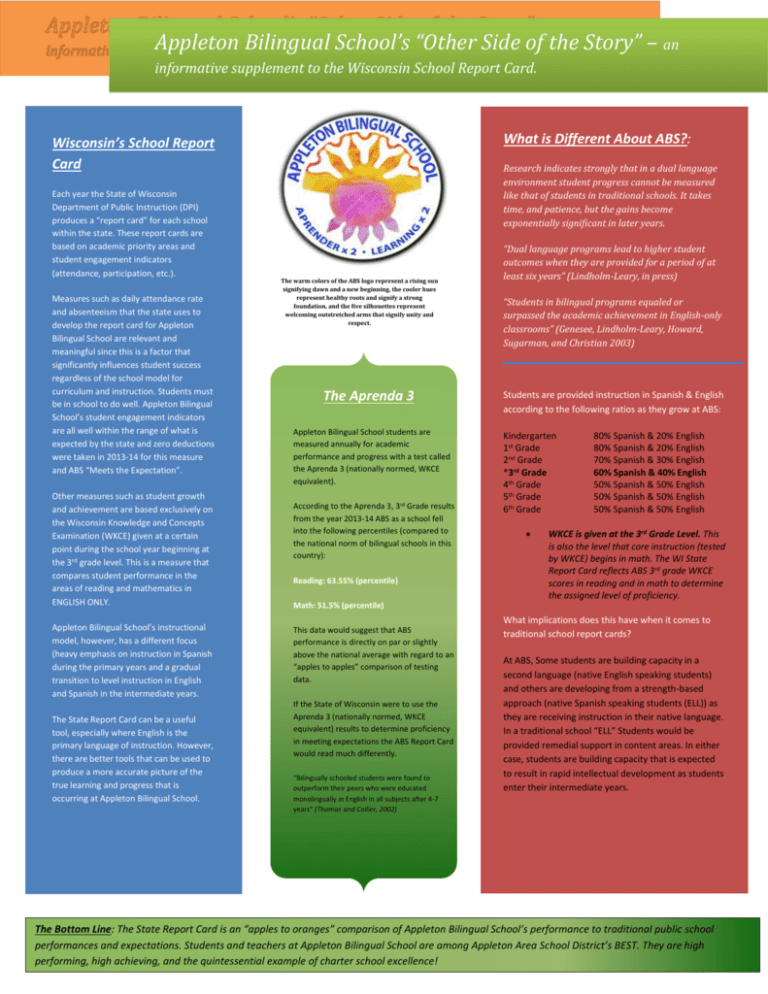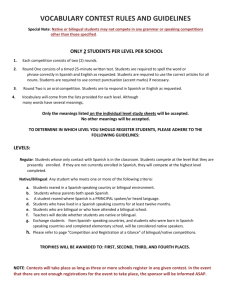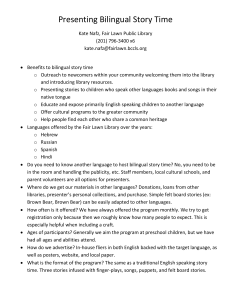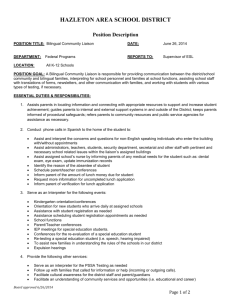Appleton Bilingual School`s "Other Side of the Story"
advertisement

Appleton Bilingual School’s “Other Side of the Story” – an informative supplement to the Wisconsin School Report Card. What is Different About ABS?: Wisconsin’s School Report Card Each year the State of Wisconsin Department of Public Instruction (DPI) produces a “report card” for each school within the state. These report cards are based on academic priority areas and student engagement indicators (attendance, participation, etc.). Measures such as daily attendance rate and absenteeism that the state uses to develop the report card for Appleton Bilingual School are relevant and meaningful since this is a factor that significantly influences student success regardless of the school model for curriculum and instruction. Students must be in school to do well. Appleton Bilingual School’s student engagement indicators are all well within the range of what is expected by the state and zero deductions were taken in 2013-14 for this measure and ABS “Meets the Expectation”. Other measures such as student growth and achievement are based exclusively on the Wisconsin Knowledge and Concepts Examination (WKCE) given at a certain point during the school year beginning at the 3rd grade level. This is a measure that compares student performance in the areas of reading and mathematics in ENGLISH ONLY. Appleton Bilingual School’s instructional model, however, has a different focus (heavy emphasis on instruction in Spanish during the primary years and a gradual transition to level instruction in English and Spanish in the intermediate years. The State Report Card can be a useful tool, especially where English is the primary language of instruction. However, there are better tools that can be used to produce a more accurate picture of the true learning and progress that is occurring at Appleton Bilingual School. Research indicates strongly that in a dual language environment student progress cannot be measured like that of students in traditional schools. It takes time, and patience, but the gains become exponentially significant in later years. The warm colors of the ABS logo represent a rising sun signifying dawn and a new beginning, the cooler hues represent healthy roots and signify a strong foundation, and the five silhouettes represent welcoming outstretched arms that signify unity and respect. The Aprenda 3 Appleton Bilingual School students are measured annually for academic performance and progress with a test called the Aprenda 3 (nationally normed, WKCE equivalent). According to the Aprenda 3, 3rd Grade results from the year 2013-14 ABS as a school fell into the following percentiles (compared to the national norm of bilingual schools in this country): Reading: 63.55% (percentile) “Dual language programs lead to higher student outcomes when they are provided for a period of at least six years” (Lindholm-Leary, in press) “Students in bilingual programs equaled or surpassed the academic achievement in English-only classrooms” (Genesee, Lindholm-Leary, Howard, Sugarman, and Christian 2003) Students are provided instruction in Spanish & English according to the following ratios as they grow at ABS: Kindergarten 1st Grade 2nd Grade *3rd Grade 4th Grade 5th Grade 6th Grade 80% Spanish & 20% English 80% Spanish & 20% English 70% Spanish & 30% English 60% Spanish & 40% English 50% Spanish & 50% English 50% Spanish & 50% English 50% Spanish & 50% English WKCE is given at the 3rd Grade Level. This is also the level that core instruction (tested by WKCE) begins in math. The WI State Report Card reflects ABS 3rd grade WKCE scores in reading and in math to determine the assigned level of proficiency. Math: 51.5% (percentile) This data would suggest that ABS performance is directly on par or slightly above the national average with regard to an “apples to apples” comparison of testing data. If the State of Wisconsin were to use the Aprenda 3 (nationally normed, WKCE equivalent) results to determine proficiency in meeting expectations the ABS Report Card would read much differently. “Bilingually schooled students were found to outperform their peers who were educated monolingually in English in all subjects after 4-7 years” (Thomas and Collier, 2002) What implications does this have when it comes to traditional school report cards? At ABS, Some students are building capacity in a second language (native English speaking students) and others are developing from a strength-based approach (native Spanish speaking students (ELL)) as they are receiving instruction in their native language. In a traditional school “ELL” Students would be provided remedial support in content areas. In either case, students are building capacity that is expected to result in rapid intellectual development as students enter their intermediate years. The Bottom Line: The State Report Card is an “apples to oranges” comparison of Appleton Bilingual School’s performance to traditional public school performances and expectations. Students and teachers at Appleton Bilingual School are among Appleton Area School District’s BEST. They are high performing, high achieving, and the quintessential example of charter school excellence!






